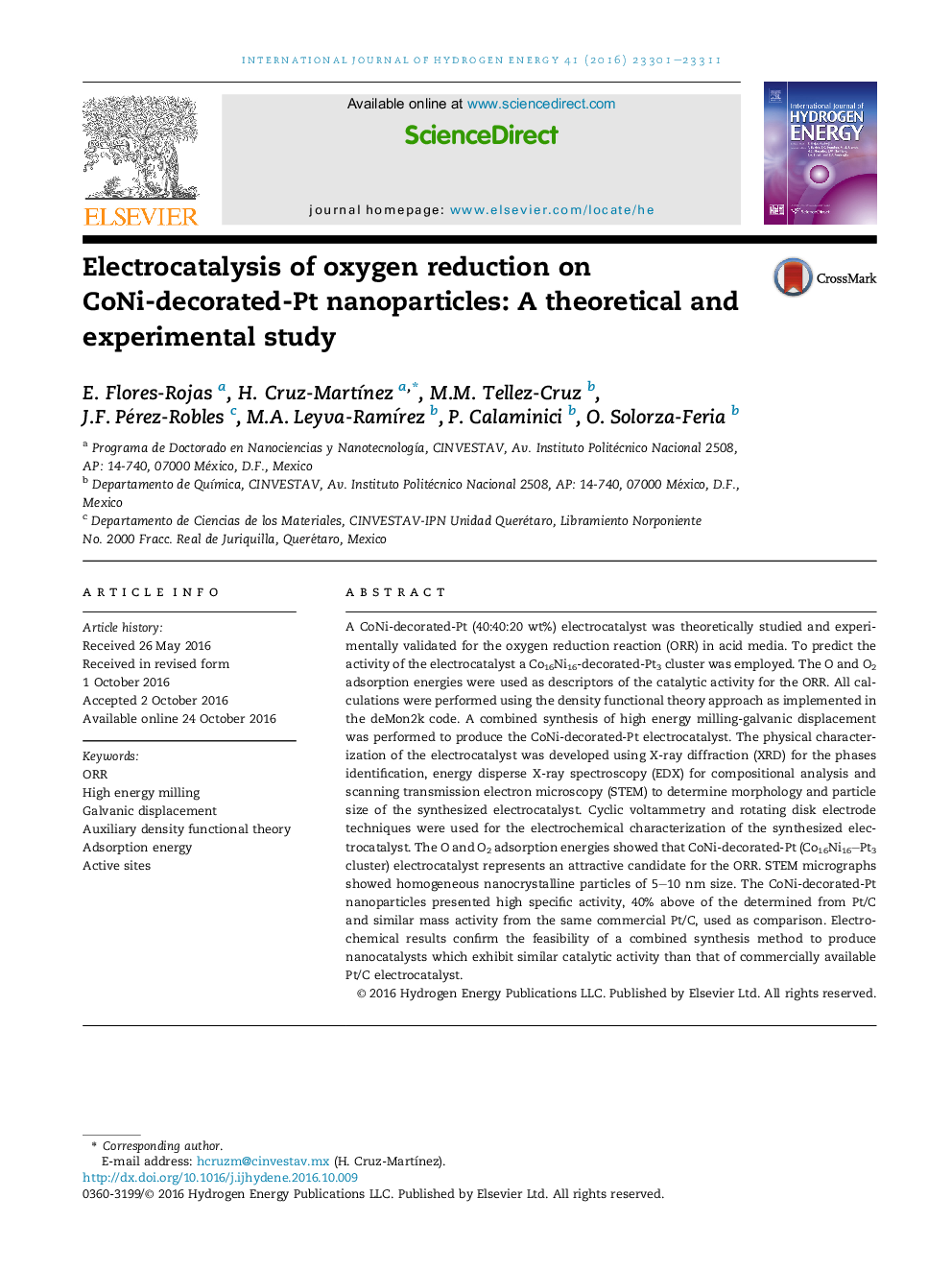| Article ID | Journal | Published Year | Pages | File Type |
|---|---|---|---|---|
| 5145855 | International Journal of Hydrogen Energy | 2016 | 11 Pages |
Abstract
A CoNi-decorated-Pt (40:40:20Â wt%) electrocatalyst was theoretically studied and experimentally validated for the oxygen reduction reaction (ORR) in acid media. To predict the activity of the electrocatalyst a Co16Ni16-decorated-Pt3 cluster was employed. The O and O2 adsorption energies were used as descriptors of the catalytic activity for the ORR. All calculations were performed using the density functional theory approach as implemented in the deMon2k code. A combined synthesis of high energy milling-galvanic displacement was performed to produce the CoNi-decorated-Pt electrocatalyst. The physical characterization of the electrocatalyst was developed using X-ray diffraction (XRD) for the phases identification, energy disperse X-ray spectroscopy (EDX) for compositional analysis and scanning transmission electron microscopy (STEM) to determine morphology and particle size of the synthesized electrocatalyst. Cyclic voltammetry and rotating disk electrode techniques were used for the electrochemical characterization of the synthesized electrocatalyst. The O and O2 adsorption energies showed that CoNi-decorated-Pt (Co16Ni16-Pt3 cluster) electrocatalyst represents an attractive candidate for the ORR. STEM micrographs showed homogeneous nanocrystalline particles of 5-10Â nm size. The CoNi-decorated-Pt nanoparticles presented high specific activity, 40% above of the determined from Pt/C and similar mass activity from the same commercial Pt/C, used as comparison. Electrochemical results confirm the feasibility of a combined synthesis method to produce nanocatalysts which exhibit similar catalytic activity than that of commercially available Pt/C electrocatalyst.
Related Topics
Physical Sciences and Engineering
Chemistry
Electrochemistry
Authors
E. Flores-Rojas, H. Cruz-MartÃnez, M.M. Tellez-Cruz, J.F. Pérez-Robles, M.A. Leyva-RamÃrez, P. Calaminici, O. Solorza-Feria,
